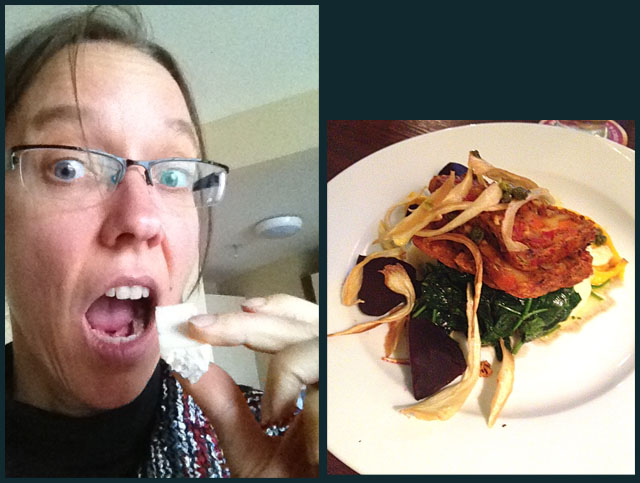
The class on Student Development Theory at The College of William and Mary.
I visited alma mater last night, The College of William and Mary, to speak about cognitive development theories developed by William Perry, Marcia Baxter Magolda, King and Kitchener, and the like. I was asked to highlight how I incorporate these theories in my research and teaching.
This was an optimal time to give such a talk, because I’m gearing up to conduct a phenomenological study of students’ experiences of collaborative, trans-disciplinary, problem-based learning. Last night’s talk got my mind moving in that direction.
The people in the picture above are working on graduate degrees in Higher Education; several of them shared ideas and recommendations for the design of my proposed project. At least two of them are using phenomenological methods for their dissertation work. Their enthusiasm for my plan raised my own energy level and got me psyched to start work.
I’d had some nagging questions about how to best protect my research participants (i.e., “subjects”); the W&M students helped address my concerns.
I’d also had difficulty making time for this project because of its sheer scale. I was trying to do too much at once.
I devised a workable plan during my drive to Williamsburg and got good response to my idea. In essence, I’m now following the rule that if you want to eat an elephant, you’ve got to proceed one bite at a time….
I’d been completely overwhelmed by trying to analyze data from 30+ participants. So, I’ve determined to focus in on one group. I can extend the work over time, but a group of six is appropriate for a phenomenological study (and a more reasonable way to digest this elephant).
So, I’ll look closely at one group of six students who worked together as a team with impressive results. Each of these students documented the team’s design process in writing across the course of a semester.
I’ve already done quite a bit of analysis on what they wrote, and that allowed me to make a purposeful selection. In this case, I know that more than one team member experienced powerful (pivotal or seminal) instances of learning. I want to find out what factors caused those changes. I’ll be looking at how the six team members experienced the collaborative design process in the period leading up to significant “a ha” moments.
I hope that the results will help educators (including me) prompt that type of “deep learning” more often.
I can extend the work to look at other groups later. And, as Dr. Jim Barber (the instructor of record for last night’s course) pointed out, I can also extend the study in the future (to make it “longitudinal”) by tracking down members of the group and conducting follow-up interviews.
I always enjoy visiting the W&M School of Education and yesterday was no exception. After arriving at the School of Education’s brand new LEED-Gold building, I admired the fall colors and gabbed with a former classmate (Sharon Stone) and my mentor (Dr. Pam Eddy) before heading into Dr. Barber’s class.
Can’t wait to visit again!

Headed to my alma mater…

…and its brand new building…

…to house the School of Education.

Its LEED-certified building is surrounded by rain gardens to filter and control storm water run off.


















